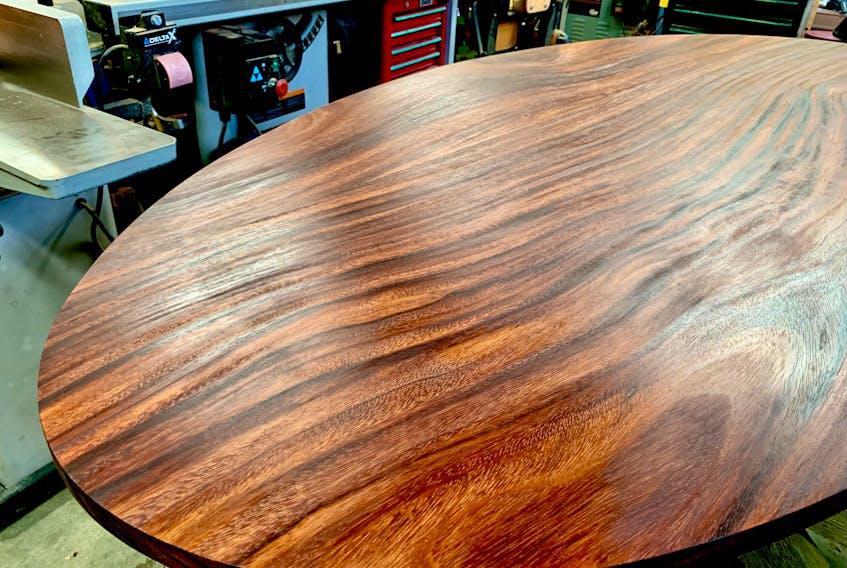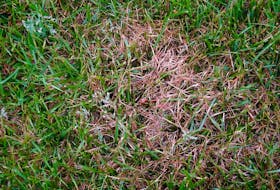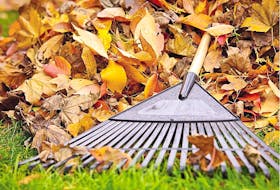Question: How can I stop polyurethane from beading up on a mahogany table top I’m refinishing? The table came from a funeral home and the liquid urethane I apply forms dimples and looks like an orange peel when wet.
Answer: It sounds like you’ve got wax or silicone residue. This is sometimes called fish eyes because of the way it looks. This would be quite likely given the frequency of polishing and care probably given to this table in a funeral home. A complete sanding before finishing usually does the trick. Did you sand back to bare wood initially? Vacuum the surface thoroughly, then rub it down with rubbing alcohol. If you’re past the point of sanding and cleaning and don’t want to sand again from scratch, try an additive.
Fish-eye preventer is a liquid silicone product made especially for adding to finishes that are having fish-eye issues. Sounds strange, but adding the very substance that’s causing the problem actually solves the problem in many cases. Only use fish-eye preventer as part of the final coat of finish.

Costing Out a Deck
Question: What’s a reasonable cost for a replacement nine-foot by 12-foot backyard deck and privacy screen? I’ve been given a price of $10k, including the use of composite decking material for the walking surfaces. Our current deck is 22-years-old and has needed constant refinishing. I’m tired of it.
Answer: The ballpark quote seems reasonable, and your wish to go with a composite is good, too. There are many brands of composites out there. Trex was the first and I still like it best. It’s a solid product (as opposed to hollow), and it looks very nice. It’s what we have at our place.
Composites are only to be used for the walking surface of a deck. The support structure is typically pressure treated wood, though Trex also does have a kind of steel product that serves as a support structure. I’d recommend a wooden frame unless your builder likes something else.
As for materials cost for your new deck, the best approach is to get a few of the building supply outlets to design and price the project for you. All the big box stores have in-house designers who will work with you to draw up the plan and cost out the options. This way you’ll have an accurate sense of what your builder’s material costs are, comparing this to the rest of the estimate.
Adding Attic Insulation
Question: Should I add more insulation to my attic? We live in a Victorian-era house in Halifax and when we bought it 12 years ago it didn't have a shred of insulation. We laid down six inches. I’m concerned about adding more and blocking the vents along the edges of the roof.
Answer: The short answer is yes, you should add more. Attic insulation can and does settle sometimes and settling can reduce its effectiveness. That said, reduced effectiveness is not going to cause your home to feel a lot less comfortable since your furnace would simply turn on more frequently to make up for the extra loss of heat. All this is why it’s important to find out how much insulation you’ve got now. Loose-fill insulation has an R value of just under R3 per inch. Batts are about R3.8 per inch. So, a 20-inch depth of insulation delivers about R50 to R55. This is a reasonable amount for anyone living in a place with serious winter. This depth of insulation can be installed without blocking those all-important ventilation louvres you mentioned along the edges of your attic where the roof slopes down.
Fixing fisheye wood finishes
Steve Maxwell is a big fan of what insulation can do to improve life. Visit him online for free articles and videos about wise home ownership and DIY work in a Canadian context.









